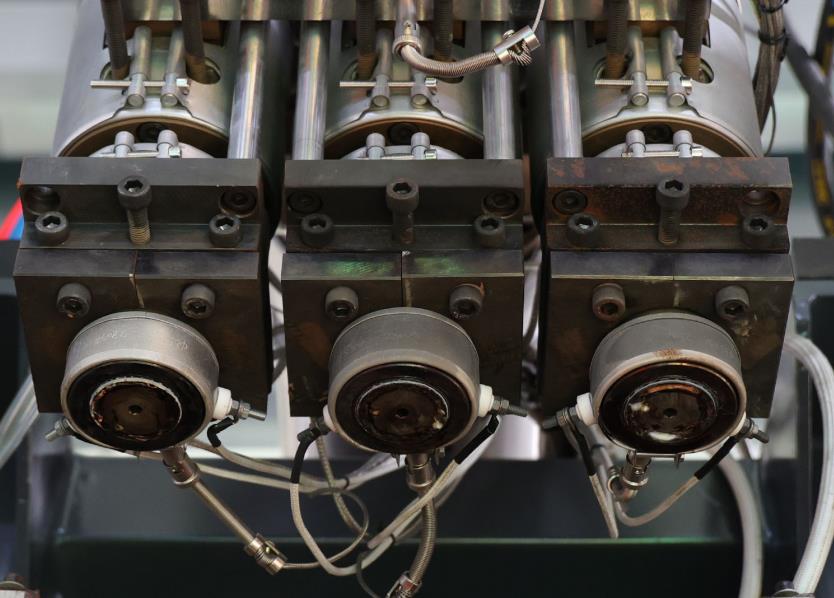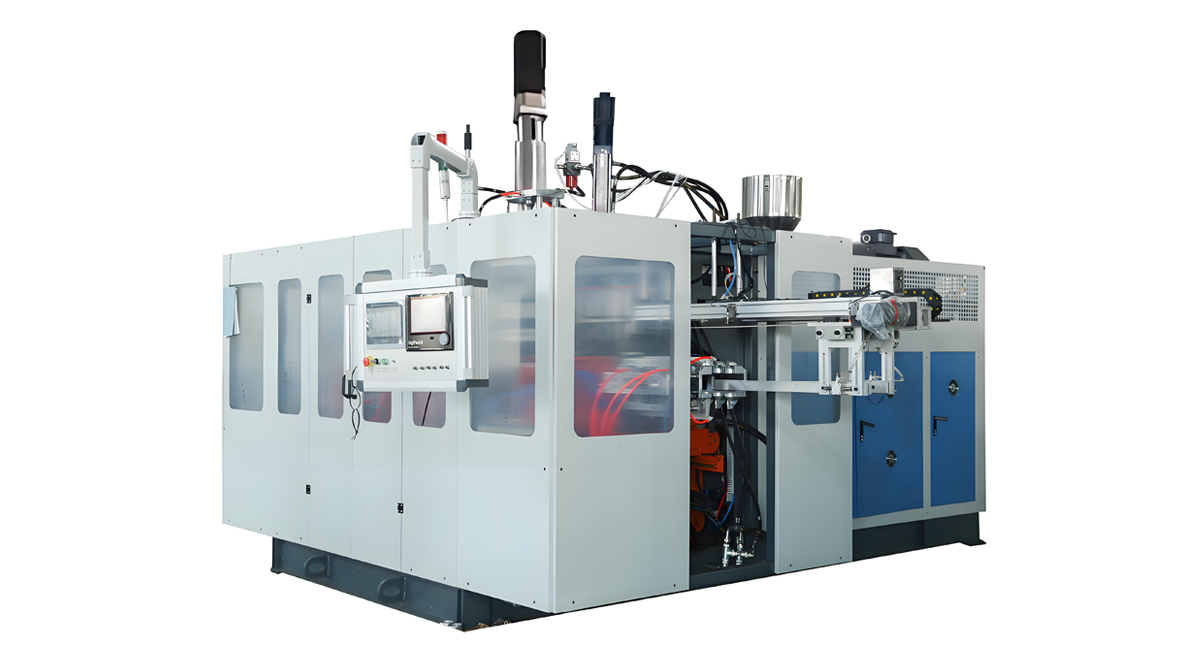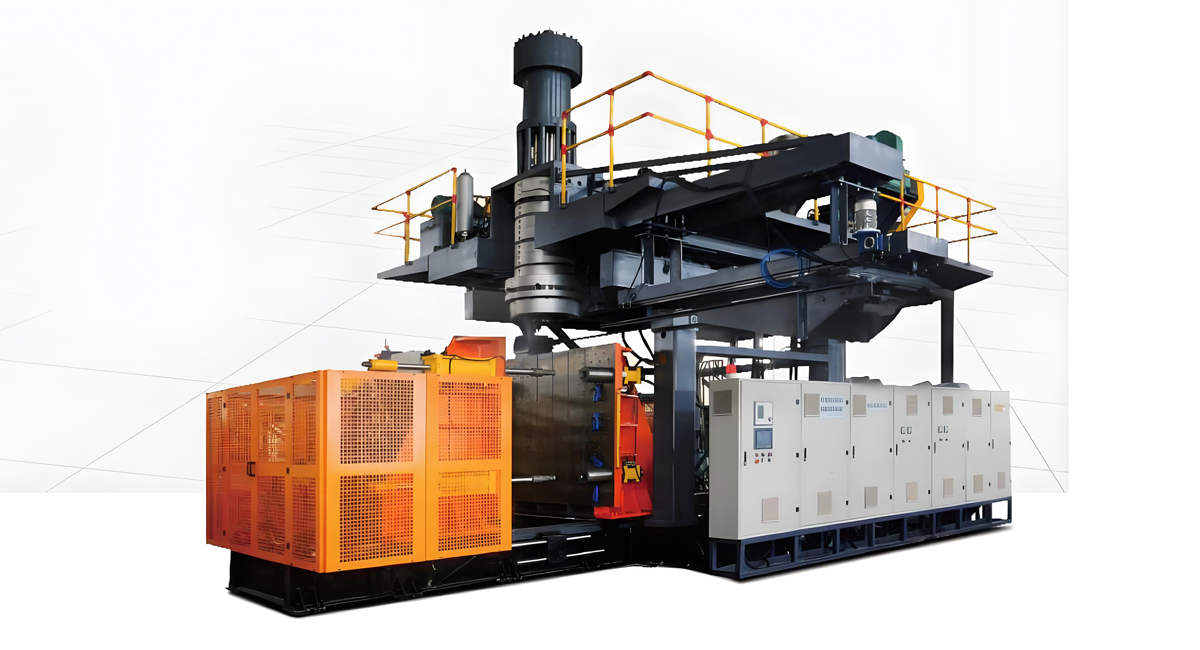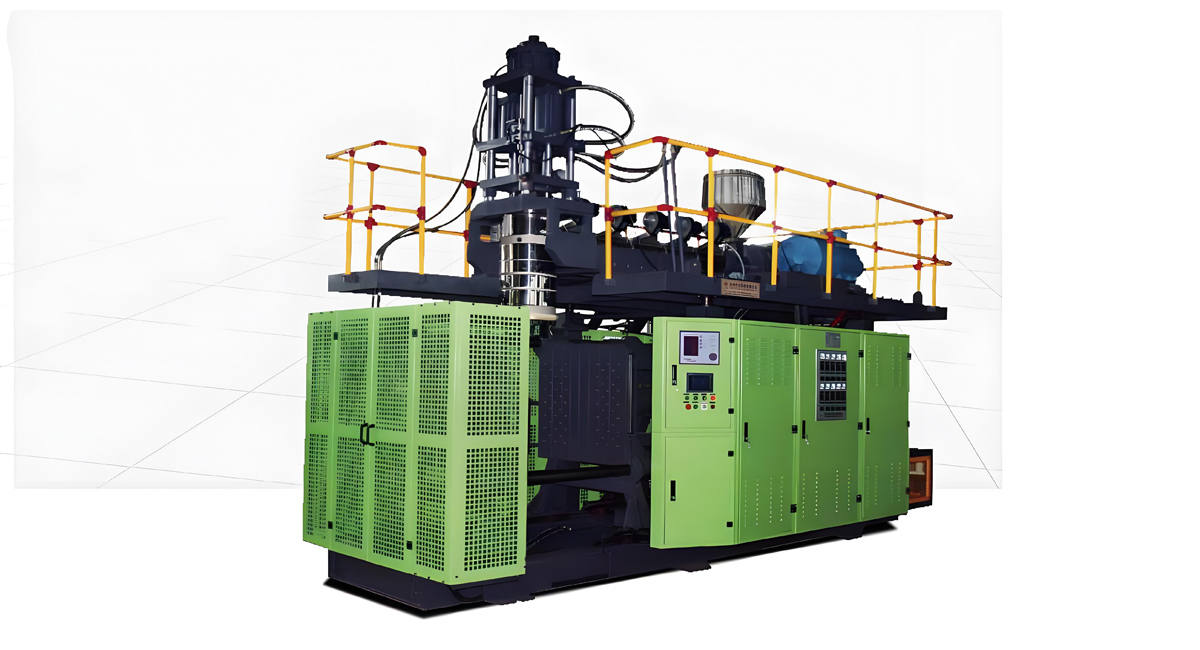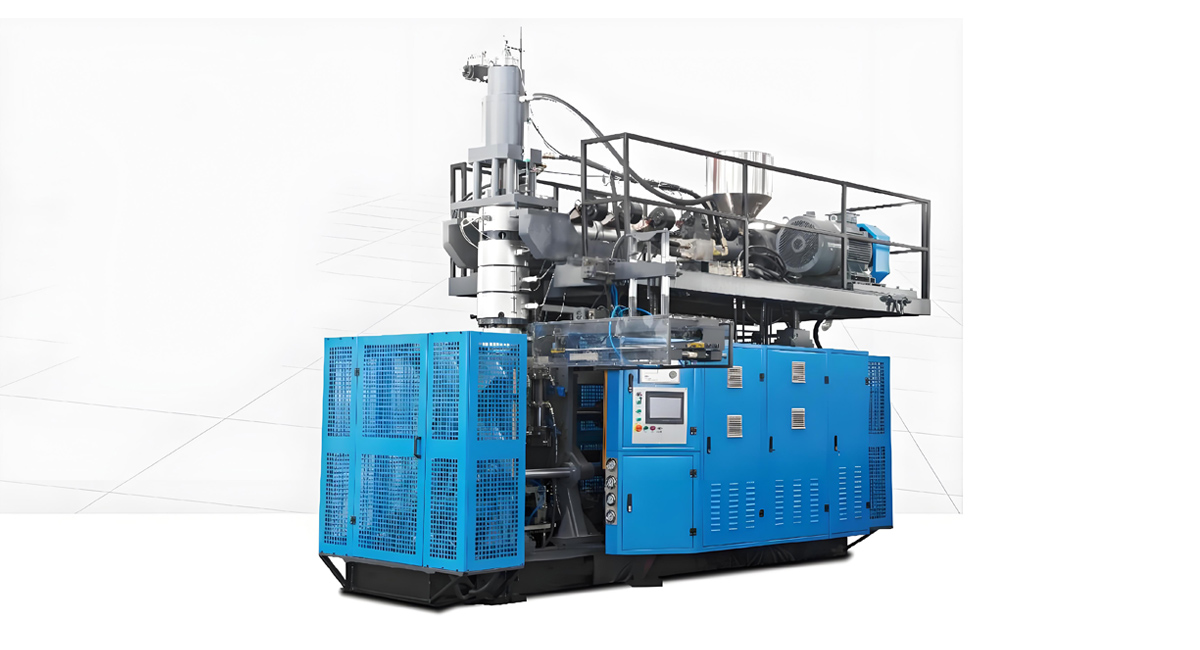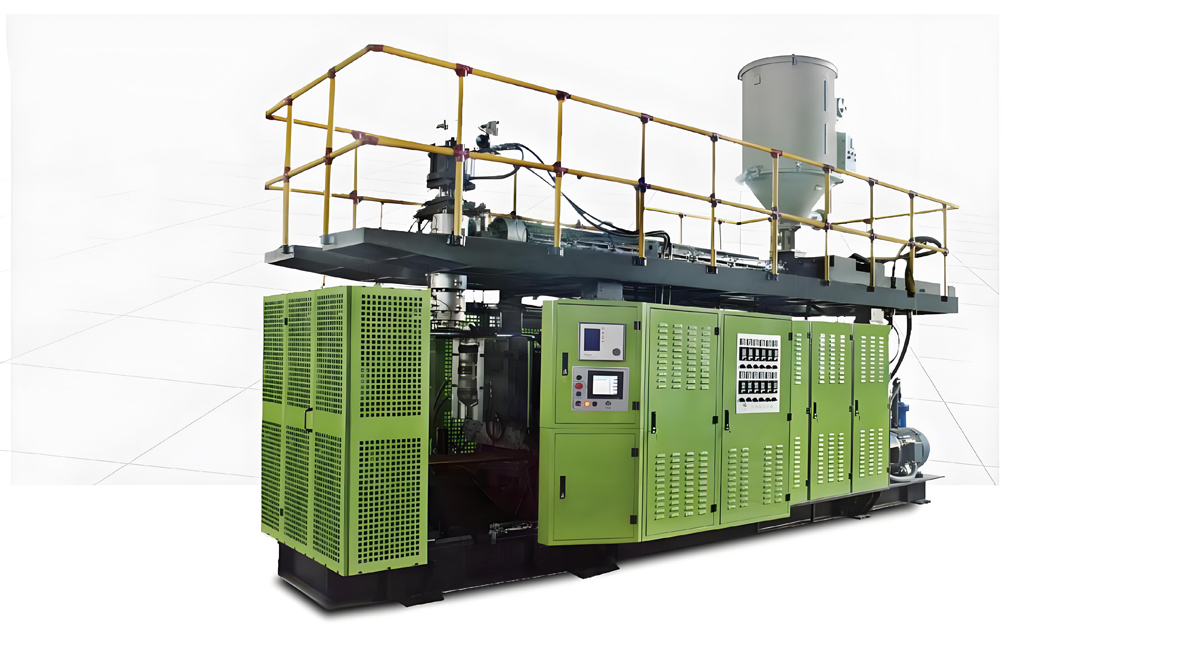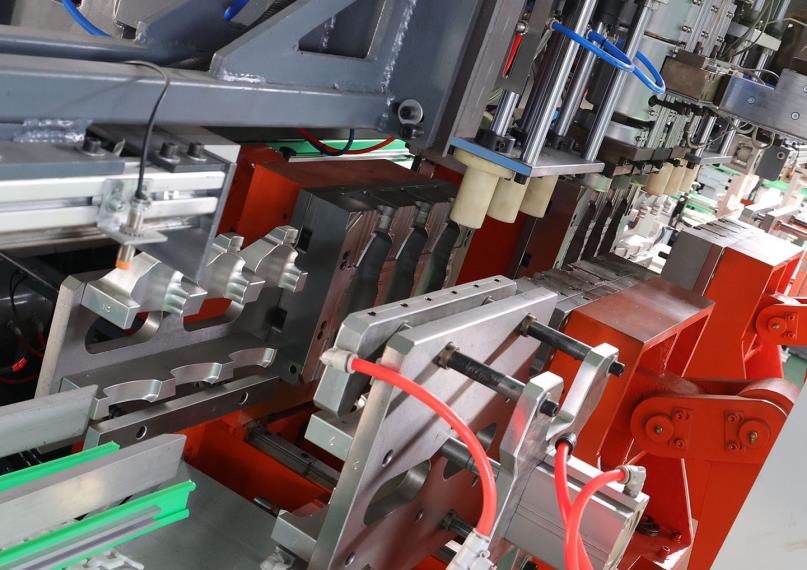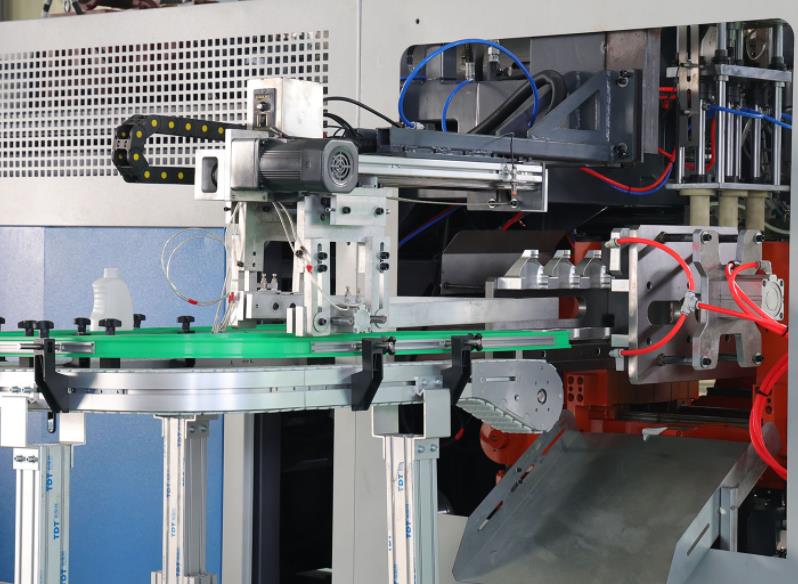The extrusion blow molding machine mainly consists of the following key parts:
Extruder:
It is the core component of an extrusion blow molding machine, responsible for heating, melting, and extruding plastic raw materials into shape.
Extruders are usually composed of a barrel, screw, transmission system, heating and cooling system, and feeding device.
The screw is a key component of the extruder, which pushes plastic raw materials forward and heats and melts them through rotation.
Prototype mold head:
Located at the end of the extruder, responsible for extruding melted plastic into tubular billets.
The design of the billet mold head determines the diameter, thickness, and shape of the billet.
The common types of billet molds include side feed type molds and center feed type molds. When blow molding large products, storage cylinder type billet molds are often used.
Inflating equipment:
Responsible for injecting compressed air into the billet, causing it to inflate and adhere tightly to the inner wall of the mold.
Inflating equipment usually consists of a blowing tube head, a compressed air source, and a control system.
Modular organization:
Responsible for the opening and closing movement of the mold to clamp the billet and perform blow molding.
The mold organization is usually composed of molds, mold opening and closing mechanisms, and mold locking mechanisms.
Control system:
Responsible for controlling and monitoring the operation of the entire extrusion blow molding machine.
The control system usually consists of electrical control system, hydraulic system, automatic clamping system, etc.
The electrical control system can control most of the processes and systems of the entire equipment; The hydraulic system, as a driving system, can control equipment to operate in a stable state during production; The automatic clamping system can control the fixture to remove the product after production is completed.
Other auxiliary components:
Such as heating systems (for heating control of certain processes that require heating, heating time and temperature need to be controlled separately), cooling systems (for cooling and shaping molds and products), demolding devices (for removing molded products from molds), etc.
These components work together to complete the process of processing plastic raw materials into various shapes and specifications of plastic products. In practical applications, the specific composition of extrusion blow molding machines may vary depending on different equipment models, production requirements, and raw materials.
In addition to the key components mentioned earlier, the extrusion blow molding machine may also include the following important components and auxiliary systems:
nose:
The head is an important component of an extrusion blow molding machine, which is connected to the end of the extruder and is responsible for extruding melted plastic into a tubular billet.
The internal structure of the machine head is finely designed, including porous plates, filter connecting pipes, and core components, to ensure that the extruded billet has uniform thickness and smooth surface.
According to different production needs, machine heads can be divided into various types such as straight through machine heads, corner machine heads, and machine heads with storage cylinders.
Mold:
Mold is a key component used in extrusion blow molding machines to shape plastic products.
It is usually composed of two halves of a mold with a parting surface as the boundary, customized according to the shape and size of the product.
The material of the mold is usually made of high-strength, wear-resistant, and corrosion-resistant alloy steel or stainless steel.
Transmission system:
The transmission system is responsible for driving the screw of the extruder to rotate, thereby achieving the transportation, compression, and melting of plastic raw materials.
It is usually composed of components such as motors, gearboxes, and bearings, with stable transmission performance and high torque output capability.
Heating and cooling system:
The heating system is used to heat the extruder and mold to ensure that the plastic raw materials can be fully melted and formed.
The cooling system is used to cool and shape the plastic products after molding, in order to improve the quality and stability of the products.
These two systems typically achieve precise temperature control through components such as heaters, cooling devices, and temperature sensors.
Automatic control system:
The automatic control system is an important component of modern extrusion blow molding machines, responsible for real-time monitoring and control of the entire production process.
Through components such as sensors, actuators, and controllers, the automatic control system can achieve precise adjustment and optimization of extrusion speed, temperature, pressure, and other parameters, thereby improving production efficiency and product quality.
Auxiliary device:
The extrusion blow molding machine may also be equipped with some auxiliary devices, such as raw material drying device, dehumidification device, exhaust gas treatment device, etc., to improve the production environment, enhance product quality and safety.
In summary, the components and auxiliary systems of an extrusion blow molding machine are numerous, and they work together to complete the process of processing plastic raw materials into various shapes and specifications of plastic products. In practical applications, it is necessary to select and configure according to specific production needs and equipment models.


